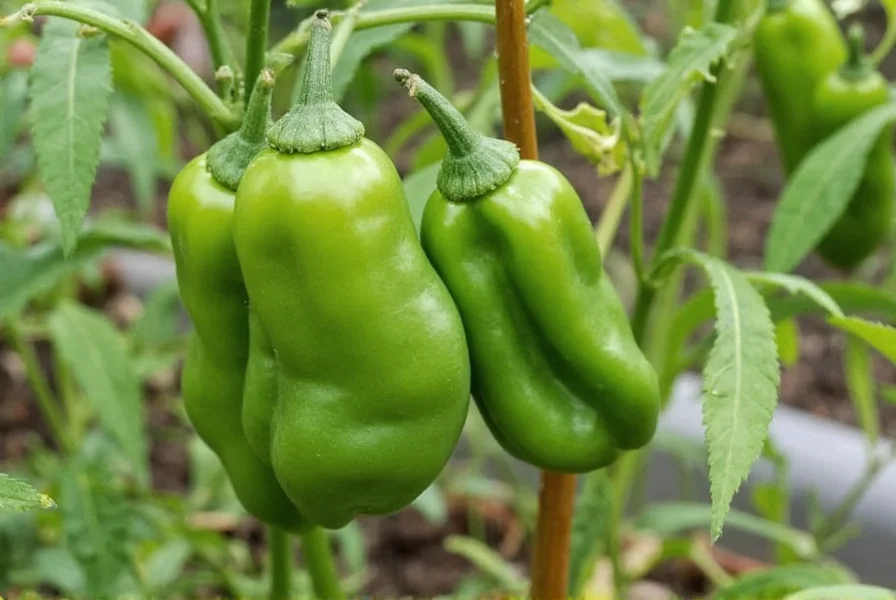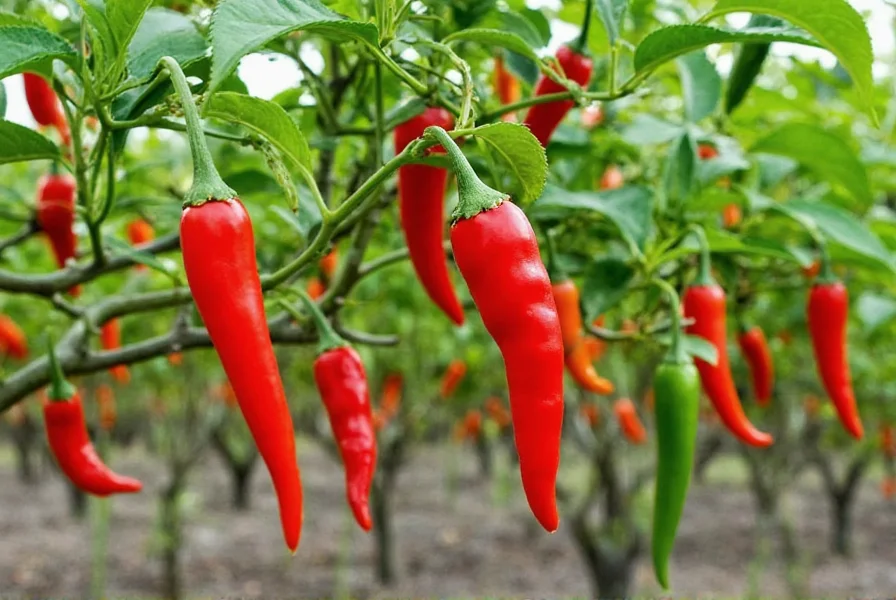Understanding paprika pepper seeds begins with recognizing they're not a single variety but represent specific pepper cultivars selected for paprika production. These seeds produce plants that differ significantly from standard bell peppers or hot chili varieties, with characteristics optimized for spice production rather than fresh eating.
What Makes Paprika Pepper Seeds Unique
Paprika pepper seeds originate from sweet pepper varieties primarily grown in Hungary, Spain, and California. The most common types include:
| Variety | Heat Level (SHU) | Days to Maturity | Best Use |
|---|---|---|---|
| Hungarian Wax | 0-1,000 | 65-75 | Traditional paprika |
| Sweet Spanish | 0 | 70-80 | Smoked paprika |
| Alma | 0 | 60-70 | Early harvest paprika |
Unlike hot pepper seeds, paprika varieties contain minimal capsaicin, focusing instead on rich carotenoids that create the deep red color essential for quality paprika. The seeds themselves appear identical to other pepper seeds—small, flat, and cream-colored—making proper variety selection critical.

Starting Paprika Seeds Successfully
Successful germination of paprika pepper seeds requires attention to specific conditions that differ slightly from standard pepper varieties:
- Timing: Start seeds indoors 8-10 weeks before your last expected frost date
- Temperature: Maintain consistent soil temperature of 75-85°F (24-29°C) using a heat mat
- Soil mix: Use sterile seed starting mix with excellent drainage
- Planting depth: Sow seeds ¼ inch deep, spacing 1-2 inches apart
- Moisture: Keep soil consistently moist but not waterlogged
Germination typically occurs within 7-14 days. Once seedlings develop their first true leaves, transplant them into 3-4 inch pots. Paprika seedlings require more consistent warmth than bell peppers during early growth stages, making temperature control crucial for paprika seed germination tips.
Growing Conditions for Optimal Paprika Production
Paprika pepper plants thrive under specific conditions that maximize both yield and flavor development:
Soil Requirements
These plants prefer slightly acidic to neutral soil (pH 6.0-7.0) rich in organic matter. Amend garden soil with compost before transplanting, and consider adding calcium to prevent blossom end rot. Unlike hot pepper varieties, paprika peppers benefit from slightly higher phosphorus levels to support fruit development for growing sweet paprika from seeds.
Sunlight and Watering
Provide 6-8 hours of direct sunlight daily. Water consistently to maintain even soil moisture—paprika peppers are more sensitive to drought stress than hot varieties, which can cause premature fruit drop. Mulch around plants to conserve moisture and regulate soil temperature.

Harvesting and Processing for Homemade Paprika
The distinctive flavor and color of paprika develops fully when peppers reach complete maturity on the plant:
- Wait until peppers turn deep, uniform red (typically 60-80 days after transplanting)
- Harvest carefully using scissors to avoid damaging plants
- Clean peppers and remove stems and seeds
- Slice peppers into thin strips for faster drying
- Dry at 135°F (57°C) until brittle (12-24 hours)
- Grind dried peppers into fine powder using a spice grinder
Properly dried paprika should retain its vibrant red color. Store in an airtight container away from light to preserve flavor compounds for up to 6 months. This process transforms your harvesting paprika peppers for drying into authentic homemade spice.
Common Challenges When Growing Paprika Peppers
Gardeners often encounter specific issues with paprika varieties that differ from standard pepper problems:
- Blossom drop: Caused by temperatures above 90°F—provide afternoon shade in hot climates
- Thin fruit walls: Normal for paprika varieties but makes them more susceptible to sunscald
- Lower disease resistance: Many paprika varieties have less resistance to tobacco mosaic virus
- Slower maturity: Compared to bell peppers, requiring longer growing seasons
Understanding these differences helps address problems specific to paprika pepper plant care rather than applying generic pepper growing advice.
Frequently Asked Questions
Can I grow paprika peppers in containers?
Yes, paprika peppers grow well in containers with a minimum 5-gallon capacity and proper drainage. Use a high-quality potting mix and ensure plants receive 6-8 hours of direct sunlight. Container-grown plants require more frequent watering and weekly feeding with balanced fertilizer, especially when growing Hungarian paprika varieties which have higher nutrient needs.
How do paprika seeds differ from regular bell pepper seeds?
Paprika pepper seeds come from specific Capsicum annuum varieties bred for thin-walled, brightly colored fruits ideal for drying. While the seeds appear identical to bell pepper seeds, the resulting plants produce peppers with lower water content, higher carotenoid levels, and sweeter flavor profiles specifically optimized for spice production rather than fresh consumption.
When is the best time to plant paprika seeds outdoors?
Transplant paprika seedlings outdoors 2-3 weeks after your last frost date when soil temperatures consistently reach 65°F (18°C) at a 4-inch depth. Unlike hot peppers, paprika varieties are more sensitive to cold soil, so wait until nighttime temperatures stay above 55°F (13°C) for optimal growth. In shorter season climates, start seeds indoors 10-12 weeks before last frost for sufficient growing time.
Why aren't my paprika peppers turning red?
Paprika peppers require full maturity to develop their characteristic deep red color. This typically takes 2-3 weeks longer than bell peppers after reaching full size. Ensure plants receive adequate sunlight, avoid over-fertilizing with nitrogen, and maintain consistent moisture. Some varieties like 'Alma' mature faster than traditional Hungarian types. Patience is key when growing paprika from seeds as the color development directly impacts final spice quality.
Can I save seeds from my paprika peppers for next year?
Yes, but only if growing open-pollinated or heirloom varieties. Most commercial paprika peppers are hybrids, so saved seeds won't produce identical plants. For heirloom varieties like 'Szentesi Futó', allow fully ripe peppers to mature an additional 2-3 weeks on the plant before harvesting seeds. Clean, dry thoroughly, and store in a cool, dark place. Properly stored paprika seeds remain viable for 2-3 years when following correct seed-saving techniques.











 浙公网安备
33010002000092号
浙公网安备
33010002000092号 浙B2-20120091-4
浙B2-20120091-4